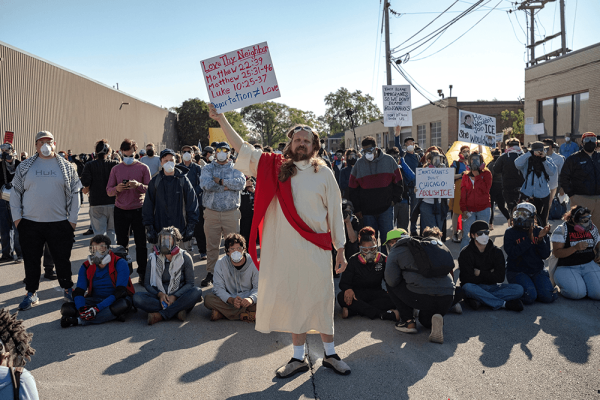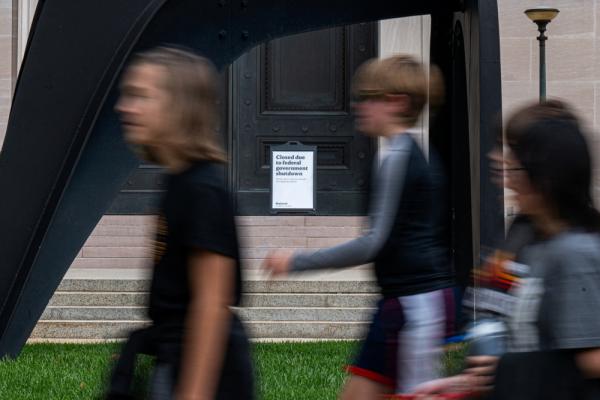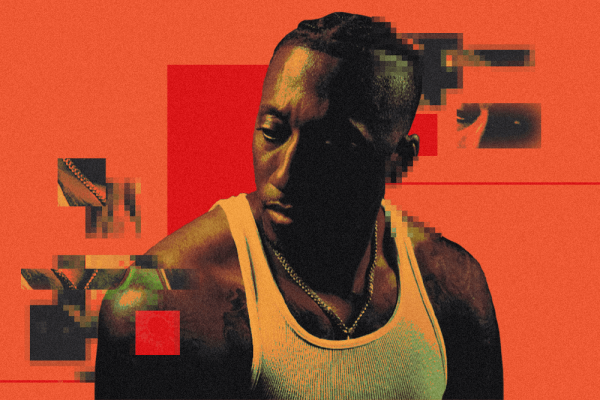While it is still dark, Easter happens. Because if the message is that Easter only happens in the light, when we feel strong and certain, when suffering and death hasn’t touched our lives, when the powers of empire have been defeated and justice is consistently done — if that’s the only context where Easter happens, then our celebration of Easter would be a farce.
Because it is still dark. Do I need to line out the darkness and dissonance in our nation, world, and relationships? The litany of human struggle and suffering have become in my own mind like white noise because of how often I’ve repeated that litany and list in sermon after sermon and prayer after prayer.
On Aug. 29, 2015, I entered what was for me a long journey through darkness. It wasn’t through an act of senseless violence, but rather through the mundane and universal experience of illness and death. My dad died after a long, painful struggle with Parkinson’s Disease. I had begun my ministry here at Foundry about a year earlier and so I was still trying to find my way in this community and ministry role. Checking out to deal with my grief wasn’t an option.
I’ve described the 12 to18 months following my father’s death as my “cave-dwelling” period. I ventured out of the cave to do my public ministry, to try to be present and creative and brave and all the things, but when I wasn’t doing that, I crawled into my basement den and under a blanket. I binge-watched shows I don’t much recall now (except maybe for True Blood). My temper was often short, my moods mercurial, my posture sedentary. Grief makes us do weird things. My experience of grief — not just over my dad’s death, but also over the state of things in this beautiful, broken world — has made me wonder about the weird details of the Easter story in a new way.
While it was still dark, Mary Magdalene came to the tomb of Jesus and found it empty. She didn’t know that Easter had happened. She assumed foul play, insult to injury, more of the same cruelty from a world that wouldn’t learn how to be gentle or just. She stood there and cried. What else was there to do?
But while it is still dark, Jesus draws near to Mary; she hears her name spoken by a voice she thought gone forever. “I am here, Mary. Easter is here.” Mary’s Psalm of lament turns to praise and proclamation:
You have turned my mourning into dancing;
you have taken off my sackcloth
and clothed me with joy,
so that my soul may praise you and not be silent.
O Lord my God, I will give thanks to you forever (Psalm 30:11-12).
The image of Jesus I see every Sunday is the beautiful window that faces 16th Street, the image of the risen Jesus in the garden, arms extended out in a gesture of invitation as if to say, “Shall we dance?” Oh yes, please, Jesus. Turn our mourning into dancing. Take off my sackcloth and clothe me with joy. While it is still dark, show us how to dance even at the grave. Draw us close to you in the dance so that, even from deep under a blanket of grief, we can feel the beat of your heart for us and know that you won’t let us go until we have emerged, not unscarred, but — by your grace — maybe a little wiser or more compassionate. Show us, Jesus, how to dance in the dark!
Listen to the full sermon here.
In every newsletter, we spotlight a recent sermon on any topic from a woman pastor somewhere in the world. By elevating the prophetic power of so many women faith leaders, we hope to help close the gender gap in Church leadership so that the Good News can be better proclaimed and received by both God’s sons and daughters. Email women@sojo.net to nominate a sermon.
Got something to say about what you're reading? We value your feedback!





